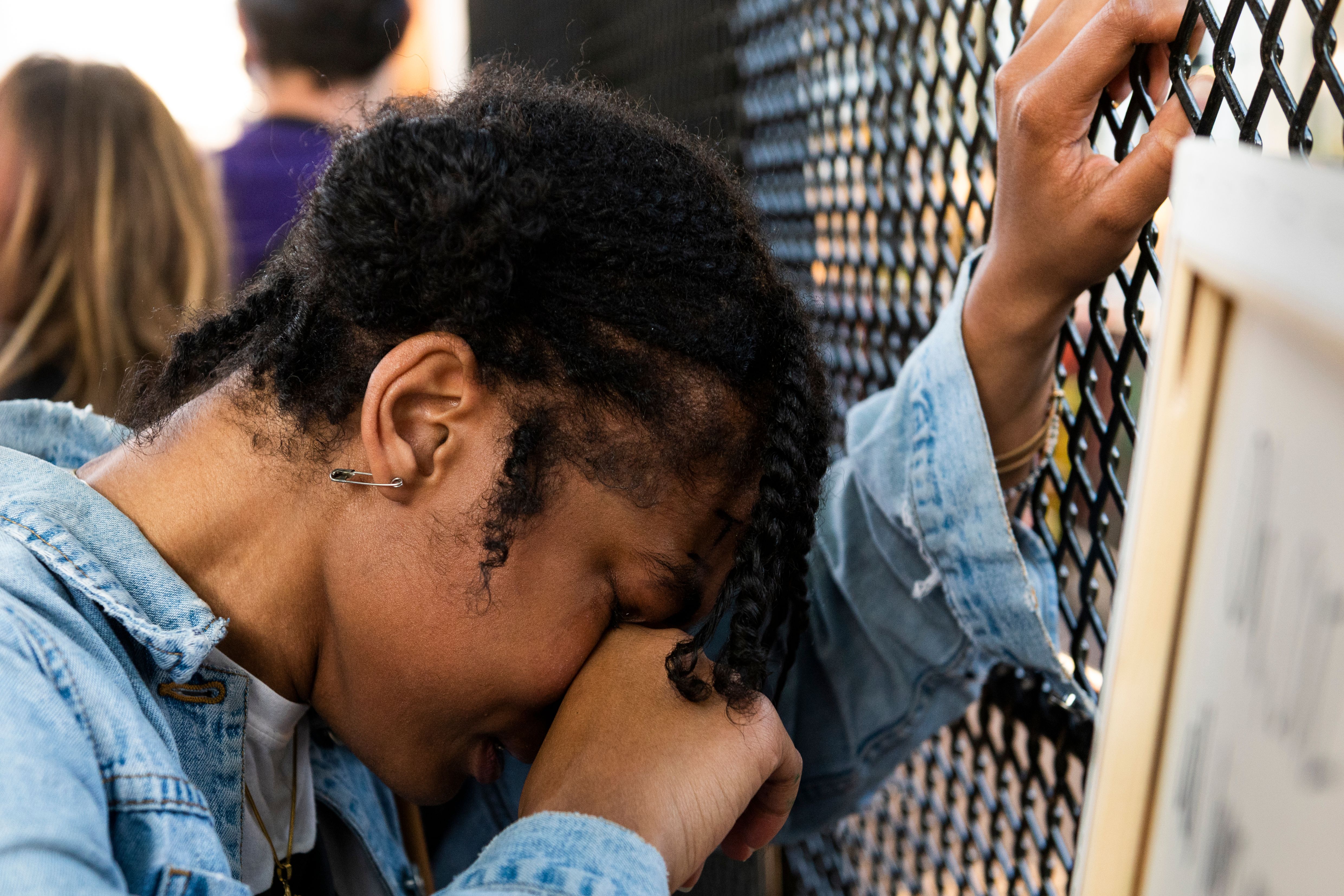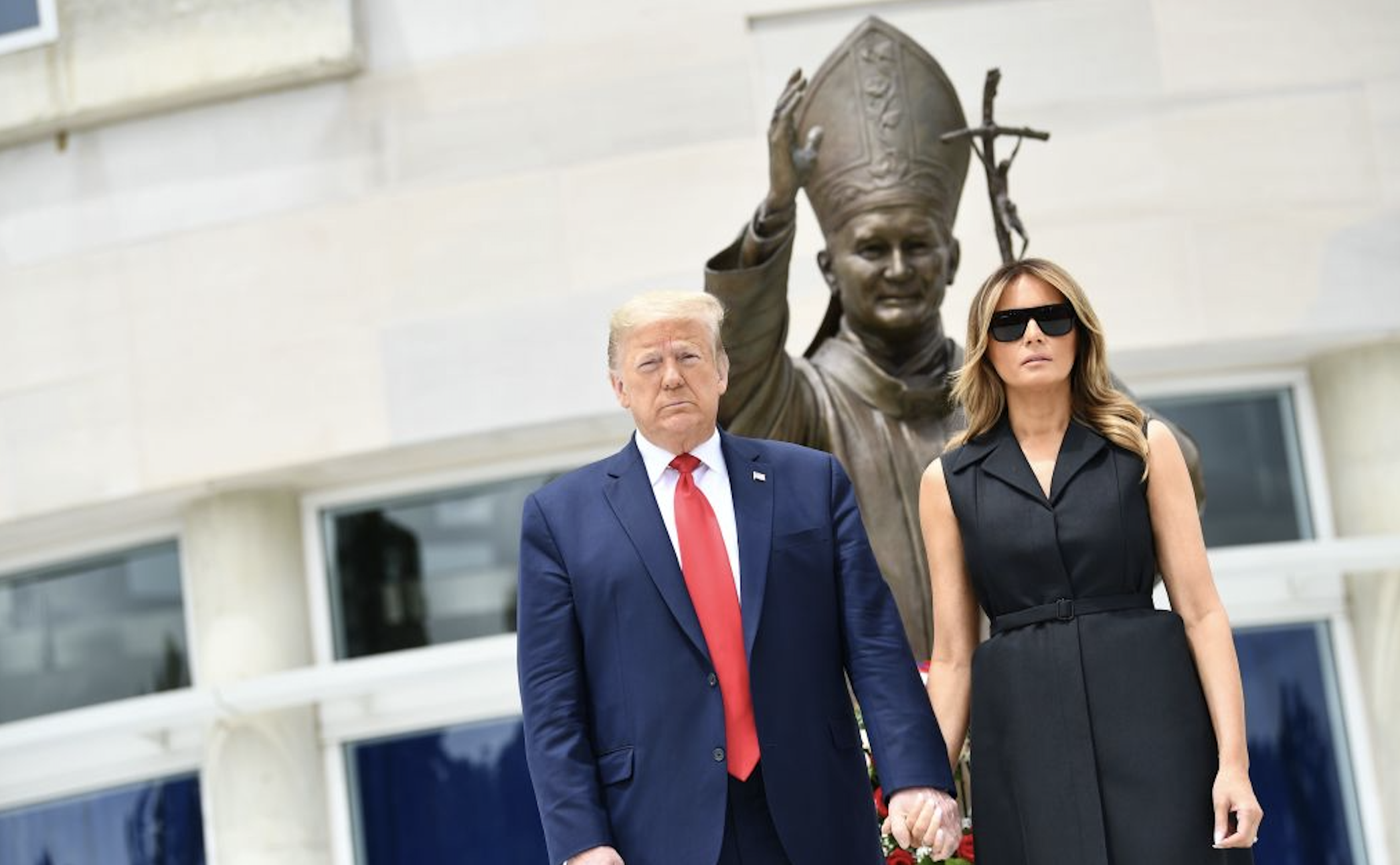Protests in Washington, D.C., over the death of George Floyd on Wednesday swelled to over 5,000 — the largest yet in the capital— without a single arrest, injury to a police officer or any damage to police property.
"I had hoped to report on this today and thankfully I am," D.C. Police Chief Peter Newsham said. "Moving forward over the next couple of days we expect the same."
It had been six days of protests that were mostly peaceful, but at times turned violent. Demonstrations in which peaceful protests were forcefully cleared from St. John's Church with pepper balls and munitions as President Donald Trump planned a photo op, federal law enforcement and National Guard encircled citizens and at least 11 D.C. police officers were injured.
Military police and law enforcement officers from a variety of federal agencies were out in force during that sixth day of protests in Washington, D.C.
A senior Defense official said at least 2,200 Guard members would be on D.C. streets Wednesday. Law enforcement officers formed a ring around the perimeter of Lafayette Square, across from the White House. Military vehicles were parked on nearby streets, also blocking access.
Mayor Muriel Bowser said anyone concerned about the presence of military should rally behind D.C. statehood to give the city autonomy and representation in Congress.
"Until we fix that, we are subject to the whims of the federal government sometimes they're benevolent and sometimes they're not," Bowser said.
Go here for coverage of protests and demonstrations on Thursday, June 4.
Protests appeared relatively tranquil hours after prosecutors increased charges against Derek Chauvin, the former Minneapolis officer who kneeled on George Floyd. Three other officers involved in the fatal arrest were charged for the first time.
Thousands of protesters gathered near the White House, kept some distance away by lines of military police.
Two protesters and a Capitol Police officer were treated for heat-related illness as temperatures ran into the 90s. One of the protesters was transported for medical care.
Despite the curfew in effect until 6 a.m. Thursday, crowds of protesters stayed late into the night. Many had dispersed by the time the sun rose.
The seventh day of protests is planned Thursday, starting with a Black Lives Matter-led die-in at the Martin Luther King Jr. Memorial. Demonstrators will lie on the ground for over eight minutes, the amount of time Floyd was pinned by Chauvin.
The early hours of Thursday remained quieter than other nights near the White House. But the number of military police was notable, and some were upset by the lack of barriers between protesters and the guards.
"I came to pass out supplies and like be here in solidarity in front of the White House. But I didn't expect military to roll up," said protester Patrick Simmons. "On the way here, they said [Defense Secretery] Esper had said he wasn't going to have military here, and now they are. I don't know, that's a weird dynamic."
Defense Secretary Mark Esper on Wednesday overturned an earlier Pentagon decision to remove a couple hundred active-duty soldiers out of the capital region, reportedly after a visit to the White House.
After months of stay-at-home orders and social distancing, hundreds sang and danced together at 16th and I Streets to "Man in the Mirror" and "Lean on Me," led by Maryland performer Kenny Sway. Thousands of protesters in the nation’s capital knelt and sang “Amazing Grace” near the White House.
As the protesters sang and chanted, law enforcement officers in riot gear stood watching over the crowd, which stretched down 16th Street.
“We are not going anywhere,” the protesters chanted.
The crowd knelt silently as the time neared for a virtual town hall by former President Barack Obama to discuss Floyd’s death, policing and the protests that have engulfed the country.
A citywide curfew started at 11 p.m. The curfew started four hours earlier the previous two nights. Bowser and Chief of Police Peter Newsham said it was necessary.
“I believe it was very effective in ramping down the level of violence," Newsham said.
Armed military troops blocked streets near the White House, expanding the area shut down. Some troops were National Guardsmen. Others had no insignias or identifiable information.
Bowser was at the protests late afternoon Wednesday and was cheered by a crowd.
Earlier in the day, she questioned whether President Donald Trump has the authority to put troops on D.C. streets.
“We are examining every legal question about the president’s authority to send troops, even National Guard, to the District of Columbia,” she said. “I have the authority to request Guard from other states. I have not requested that.”
In a powerful moment outside the U.S. Capitol building, scores of people lay face down in protest. One black person stood and raised a fist.
Also Wednesday, a Capitol police officer was seen taking a knee in front of protesters.
Under the curfew, no one could "walk, bike, run, loiter, stand or motor by car or other mode of transport upon any street, alley, park or other public place within the District," a statement from the mayor's office said.
Health care workers, members of the press and essential workers are exempt while they're on the job.
Restaurants and nonessential businesses must close.
Metro trains will run until 9 p.m., under regular COVID-19 service hours. Metrobuses will run until 11 p.m.
Anyone who violates the curfew could be charged a $300 fine or sentenced to up to 10 days in jail.
“If you are not a member of the media or do not have an essential function, you can anticipate that local police and federal police will take you into custody. That is a warning," the police chief said Monday.
The curfew follows nine weeks of restrictions on businesses and daily life because of the ongoing coronavirus pandemic.
Protests Tuesday were large and mostly peaceful, with about 5,000 participants, the police chief said. Just 19 people were arrested, down from a high of 288 people Monday night. Most were charged with violating the curfew.
Eleven percent were charged with felony rioting. Another 11% were charged with burglary.
Ninety percent of protesters who were arrested live in D.C., Maryland or Virginia, the chief said. Nine percent had unknown addresses or no fixed addresses. One percent lived in other states.
Many protesters are “self-policing" and urging each other to be peaceful, the police chief said. He cited an instance on which News4 reported on Tuesday. When one protester climbed a lamp post and removed a street sign, he was roundly booed by others.
“It’s not what we’re about,” said protester George “T.J.” Pierce of D.C.
Stay with NBC Washington for more details on this developing story.



